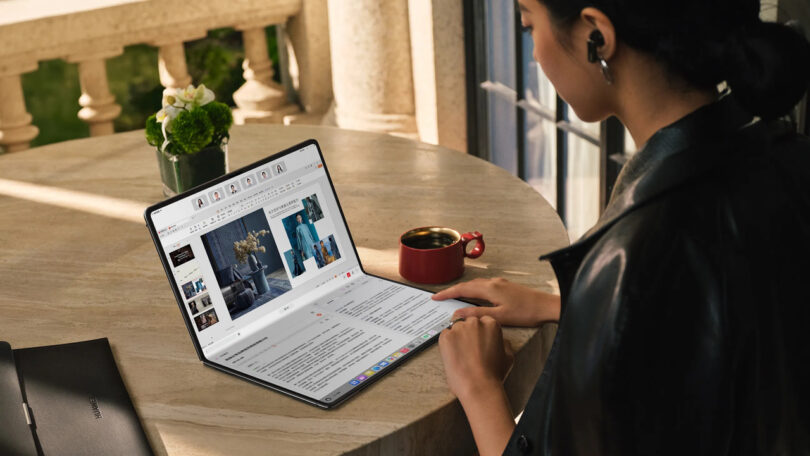Foldable displays have already revolutionized smartphones – but laptops? That’s still relatively uncharted territory. Huawei is pushing boundaries with the new Huawei MateBook Fold Ultimate Design, a foldable laptop that replaces traditional hardware conventions with one bold idea: the entire device is essentially a giant screen.
While other manufacturers have explored dual-screen laptops – like Asus with its ZenBook Duo series – most have stopped short of a fully foldable display. Huawei’s take is different. The MateBook Fold features a continuous OLED panel that folds down the middle, enabling it to function both as a conventional laptop and a full-blown tablet. No visible bezels or seams disrupt the experience.
When closed, it resembles a sleek folio. When opened, it reveals a stunning 18.3-inch OLED display, uninterrupted and immersive. That display folds neatly in half, allowing users to operate it in a more familiar clamshell mode with either an on-screen keyboard or a paired external one.
This makes it more versatile than other recent foldables like Lenovo’s ThinkPad X1 Fold or HP’s Spectre Fold, both of which made strides toward the concept but still suffered from either size limitations or early-generation tech constraints.
At just 7.3mm thin when unfolded, it’s slimmer than most smartphones, including the iPhone 16 Pro. This thinness doesn’t come at the expense of display quality either. The MateBook Fold boasts a 3K OLED panel with vibrant colors, true blacks, and high contrast levels – ideal for both content consumption and professional work like photo editing or video playback.
When folded into laptop mode, the screen size shrinks to a more standard 13 inches, making it portable enough for daily use. Its thinness and weight suggest it’s designed for users on the move – likely professionals, designers, and tech enthusiasts.
The beauty of a fully foldable device lies in its flexibility. Typing on glass might feel unfamiliar to some, but the learning curve may not be as steep as expected. After all, most of us adapted to touchscreen phones quickly – and later, to on-screen tablet keyboards.
That said, Huawei offers external keyboard support, acknowledging that tactile feedback still has its place, especially for extended writing or work sessions. You can prop the device up on a desk and use it like a monitor, or fold it like a book and sketch or annotate directly on the screen. For digital creatives and hybrid workers, this kind of versatility could be a game-changer.
While foldables remain a niche segment for now, Huawei’s new device suggests the market is maturing. More importantly, it signals that foldable laptops could one day become mainstream as the tech becomes more durable and affordable.
That’s not to say there aren’t challenges. Questions about long-term screen durability, battery life under such a large display, and heat management still loom. But if Huawei’s track record in pushing mobile innovation is any indication, these are hurdles – not roadblocks.
Currently, the Huawei MateBook Fold Ultimate Design is exclusive to the Chinese market, but hopefully that will change in the future. For more information, visit huawei.com.
Photography courtesy of Huawei.
